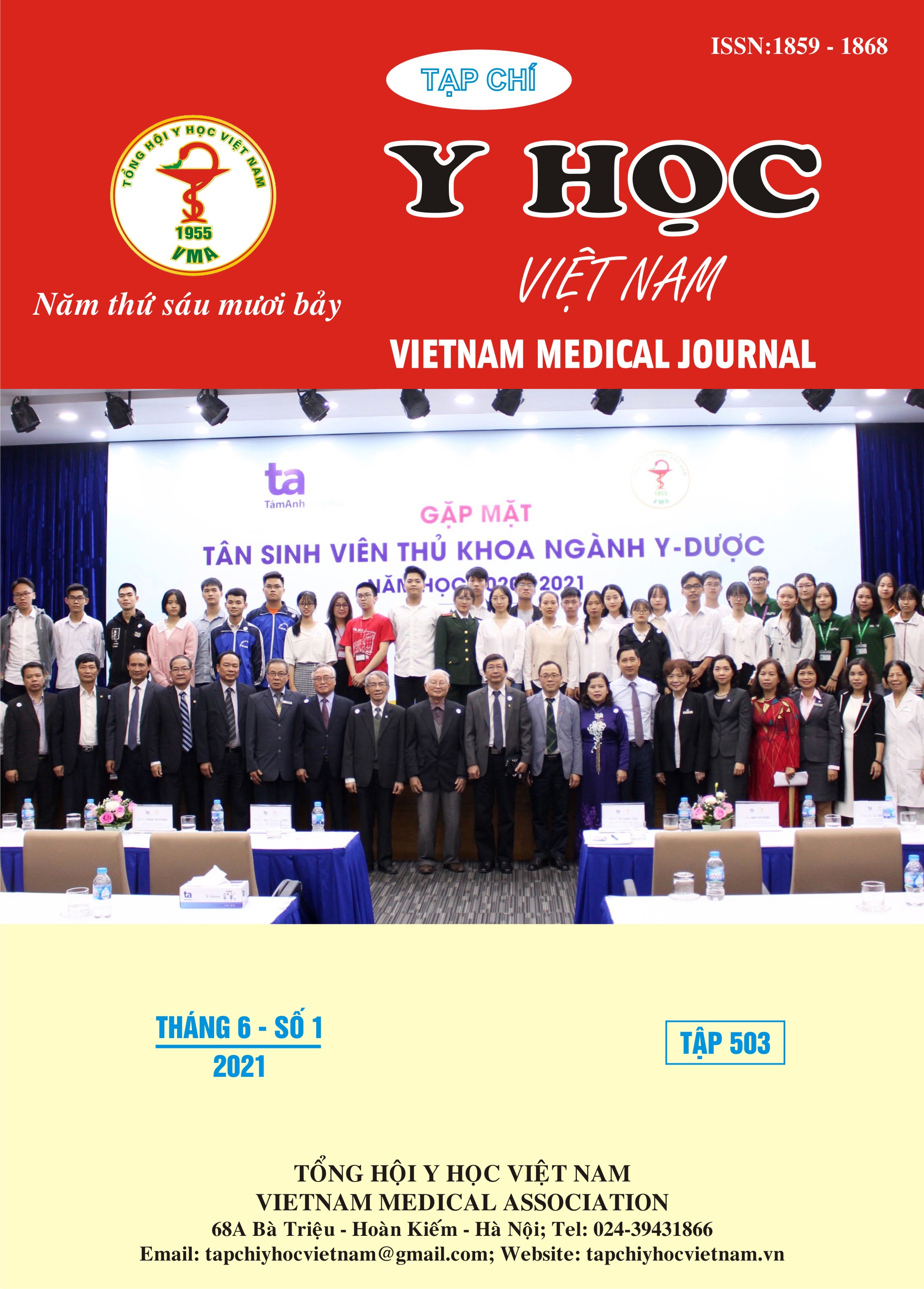THE SITUATION OF ROOT CARIES IN THE ELDERLY AT THE NATIONAL HOPSPITAL OF ODONTO-STOMATOLOGY, HANOI IN 2020 - 2021
Main Article Content
Abstract
Aim: Describe the current situation of root caries in the elderly at the National of Hospital Odonto-Stomatology, Hanoi in 2020 - 2021. Subjects and methods: Our research included 192 elderly patients who came to the Department of Dental Treatment for the Elderly - National Hospital of Odonto-Stomatology, Hanoi. We conducted cross–sectional description study. Selection criteria were patients aged 60 years old and above and agreed to participate in our research. Exclusion criteria were patients who had acute diseases, were edentulous or unable to answer interviews. Results: A total of 192 elderly patients (87 men, 105 women) were examined and assessed for the state of root caries. The number of patients with at least one root caries lesion was 51 patients, accounting for 26.6%, of which the number of males was 21 (41.2%) and the figure for females was 30 (58.8%), this difference is not statistically significant (p = 0.155 >0.05 ). The rate of recession is 75%. The RCI index is 1.3, in which, in general, the RCI of the teeth in the lower arch is higher than that of the teeth in the maxillary arch. Root caries lesions are most common in the incisors and mandibular molars. In relation to the dental surfaces, it was found that the number of root caries in the lateral surfaces is the highest and the figure for lingual surface is the lowest. Conclusions: The rate of dental caries in elderly patients is average, in which the rate of root caries in females is higher than in males. The reality of tooth loss, tooth decay, and receding gums of the tooth positions are relatively symmetrical across the midline. Decayed roots were most frequently observed for incisors and mandibular molars. The group of premolars and the third molars are rarely affected by root caries The lateral surfaces experiences the highest rates of root caries.
Article Details
Keywords
root caries, elderly, RCI, recession
References
2. Bharateesh J.V. and Kokila G. (2014). Association of Root Caries with Oral Habits in Older Individuals Attending a Rural Health Centre of a Dental Hospital in India. J Clin Diagn Res JCDR, 8(11), ZC80–ZC82.
3. Du M., Jiang H., Tai B., et al. (2009). Root caries patterns and risk factors of middle-aged and elderly people in China. Community Dent Oral Epidemiol, 37(3), 260–266
4. Imazato S., Ikebe K., Nokubi T., et al. (2006). Prevalence of root caries in a selected population of older adults in Japan. J Oral Rehabil, 33(2), 137–143.
5. Pentapati K.C., Siddiq H., and Yeturu S.K. (2019). Global and regional estimates of the prevalence of root caries - Systematic review and meta-analysis. Saudi Dent J, 31(1), 3–15.
6. Silva M., Hopcraft M., and Morgan M. (2014). Dental caries in Victorian nursing homes. Aust Dent J, 59(3), 321–328
7. Watanabe M.G.C. (2003). Root caries prevalence in a group of Brazilian adult dental patients. Braz Dent J, 14(3), 153–156.
8. Zhang J., Leung K.C.M., Chu C.H., et al. (2020). Risk indicators for root caries in older adults using long-term social care facilities in Hong Kong. Community Dent Oral Epidemiol, 48(1), 14–20.


